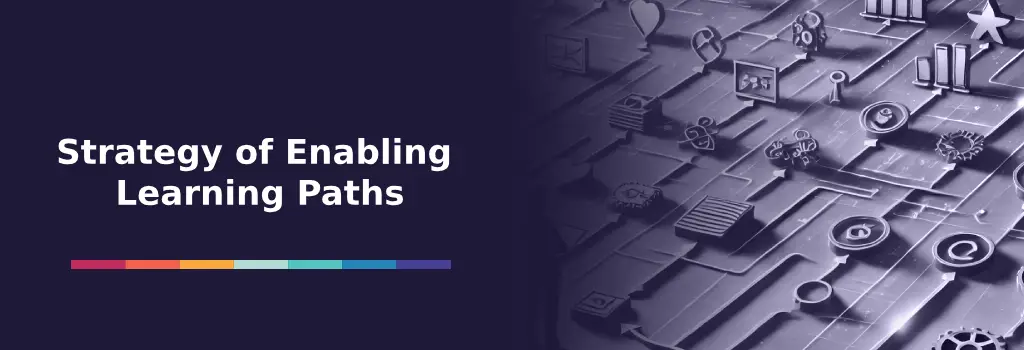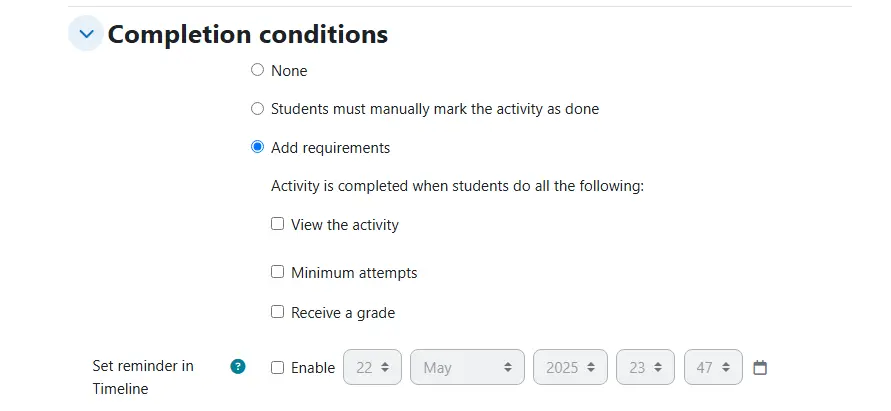Moodle offers a variety of features that make it a versatile platform for creating engaging and effective online learning experiences. Among these features, Learning Paths stand out as a powerful tool for creating personalized, structured, and outcome-oriented learning experiences. Enabling Learning Paths on Moodle can drastically improve learner engagement, retention, and completion rates.
I recently migrated my site to Mindfield from another host, and the experience couldn’t have been better. Mindfield kept working until they were certain that my site was operating as well as it was before, and they even helped clean up a few issues to improve my site’s performance – issues my prior host never mentioned. I also found Mindfield’s communication to be excellent. Before the migration, they prepared me for what to expect, and during the migration they kept me well-informed. No small feat considering that changing hosts is inherently stressful! They also provided clear and concise explanations when required. I’d highly recommend Mindfield if you’re looking for an IT consultant, developer, or host.
Jim Benedek
Owner, Student First Media Inc.
Review Source: Google Reviews
Outline
-
Challenges Faced Without Learning Paths
-
Types of Learning Paths
-
Learning Paths vs Course Bundles
-
Strategy of Enabling Learning Paths
-
Benefits of Hiring a Moodle Expert Developer to Execute Moodle Upgrades
-
Frequently Asked Questions (FAQs)
Challenges Faced Without Learning Paths

Without Learning Paths, learners will face several challenges that hinder their learning experience:
-
Lack of Direction: Without a defined learning sequence, students often find themselves overwhelmed by a long list of courses or modules. This lack of clear direction leads to confusion about what to study next, making it harder to stay on track and stay engaged.
-
Inconsistent Learning Experience: In the absence of a structured learning path, learners could jump from one topic to another without mastering essential concepts. This fragmented approach results in incomplete knowledge acquisition and can lead to learners missing out on key information.
-
Lower Retention and Motivation: Learners who lack a clear progression path are more likely to lose interest and abandon the course halfway through. The absence of milestones or visible progress can diminish their motivation to continue.
Learning Paths directly address these issues by creating a structured sequence of content, ensuring learners progress through the material in a logical order and gain a comprehensive understanding of the subject.
Types of Learning Paths

Learning Paths are highly beneficial in various educational contexts. Some of the key use cases include:
-
Corporate Training: Learning Paths are ideal for employee training programs, where new hires need to follow a specific sequence of modules to onboard effectively. For example, a new employee needs to complete compliance training before moving on to job-specific skills or advanced certifications.
-
Certifications and Professional Development: For learners aiming to earn certifications, Learning Paths can help them follow a structured path from foundational knowledge to advanced expertise. This ensures that they complete all necessary steps before attempting the final exam or certification process.
-
Personalized Learning Journeys: Moodle’s Learning Path functionality enables you to personalize learning experiences based on the learner’s skill level, pace, and interests. Beginners can follow a basic path, while more advanced learners can skip introductory content and focus on more challenging material. This customization makes the learning experience more relevant and engaging.
By offering learners a tailored journey through courses and activities, Learning Paths ensure they stay focused, motivated, and on track to achieve achieve tangible learning outcomes.
Learning Paths vs Course Bundles

While both Learning Paths and Course Bundles help organize and structure Moodle courses, they serve distinct purposes:
-
Learning Paths: These are designed for sequential learning. Learners progress through content in a specific order, with each course or activity unlocking based on the learner’s completion of the previous module. This ensures that foundational knowledge is acquired before moving on to more advanced material, making Learning Paths ideal for structured educational journeys.
-
Course Bundles: Course Bundles, on the other hand, group together related courses but allow learners to complete them in any order. There’s no set sequence for completing the courses within a bundle. This offers flexibility but doesn’t enforce the same structured progression as Learning Paths. While Course Bundles are useful for offering related topics, Learning Paths provide a more personalized and linear progression.
The key difference is that Learning Paths ensure learners follow a guided, sequential journey, while Course Bundles offer more flexibility without enforcing an order.
Strategy of Enabling Learning Paths

To enable Learning Paths in Moodle, administrators can follow a set of best practices to ensure they are implemented effectively:
-
Define Learning Objectives: The first step in creating a Learning Path is to define the learning goals clearly. Whether you’re onboarding employees, providing professional development, or preparing learners for certification exams, having clear objectives helps structure the Learning Path.
-
Use Conditional Activities: Moodle’s conditional activities feature is essential for enabling Learning Paths. This feature allows you to restrict access to certain activities until the learner has completed specific prerequisites. For example, you can ensure that learners complete Module 1 before they can access Module 2.

-
Leverage Completion Tracking: Moodle’s completion tracking feature helps monitor a learner’s progress. You can set completion criteria for each activity (e.g., passing a quiz, completing a task) to ensure learners only move forward once they’ve mastered the material.

-
Set Up Progress Indicators: To keep learners engaged and motivated, set up progress indicators that display how much content they have completed and what’s left to do. This visual representation of progress can boost learner morale and increase course completion rates.

-
Adapt Learning Paths Based on Roles or Skill Levels: Customize Learning Paths for different groups of learners based on their skill levels, roles, or goals. For example, you create a separate path for beginners and advanced learners, ensuring that each group receives the most relevant content for their level.

Benefits of Hiring Moodle Expert Developers

Hiring Moodle expert developers offers several key benefits, especially when implementing advanced features like Learning Paths. These professionals bring a deep understanding of Moodle’s architecture and can ensure that Learning Paths are set up effectively to meet your specific educational or organizational goals. By hiring experts, you can guarantee that your Learning Paths are structured in a way that maximizes learner engagement, retention, and completion rates. They can also customize the experience for different learner levels and ensure the proper integration of conditional activities, completion tracking, and progress indicators, which are crucial for creating an optimized learning environment.
Additionally, expert Moodle developers can help you navigate the complexities of system upgrades, maintenance, and troubleshooting. Their expertise ensures that Moodle’s functionality remains aligned with the latest updates and best practices, reducing the risk of technical issues and improving the overall performance of your site. This can result in a smoother user experience, faster loading times, and fewer disruptions, all of which contribute to a more successful and reliable online learning platform.

